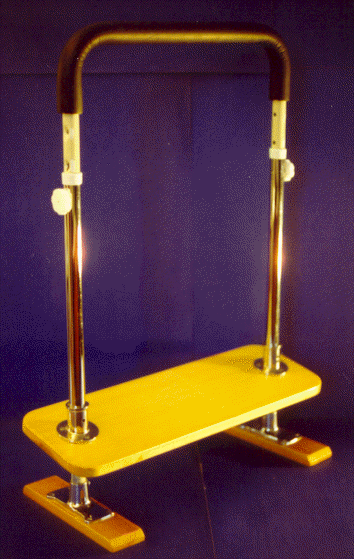
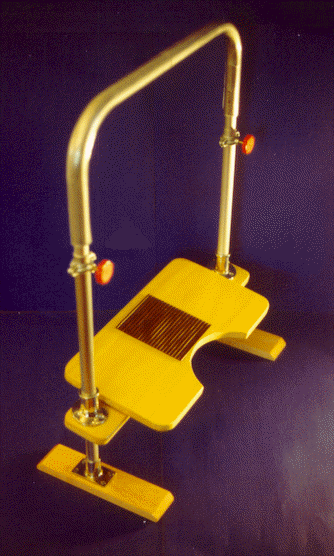
SquatSupport: U.S. Patent # 6,148,448
Purpose of product: To prevent colon cancer by using SquatSupport
Colon cancer prevention is better than colon cancer treatment or colon cancer cure; SquatSupport helps prevent colon cancer and other bowel diseases.
NOTE: This inventor has another product that's also available for licensing. Click on the link to see it.


The SquatSupport medical device supports the user in optimal squat position on any toilet. Proper squat position during defecation can prevent straining, hemorrhoids, diverticulosis, constipation and colorectal cancer (see the listed medical references).
FIGURE 1:
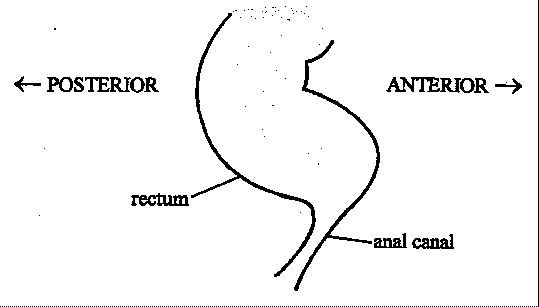
In a sitting position, the anal canal is bent at a right angle to the rectum (as shown
in Figure 1 above). The bend is nature-intended to resist the passage of bowel contents,
thereby maintaining anal continence. Sitting to defecate, therefore, often results in
excessive straining, constipation, irregularity and increased stool transit time. Effects
can be cumulative and may pose serious health risks.
FIGURE 2:
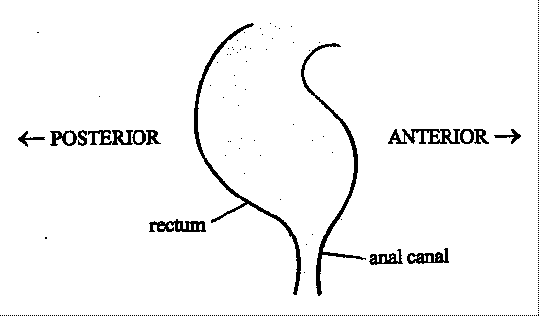
In a squat position, the anal canal is vertically aligned with the rectum (as shown in
the Figure 2 above) for easy passage of bowel contents. Defecation in a squat position is
more complete, efficient and timely, thereby reducing stool transit time and absorption of
stool toxins. Risk of hemorrhoids, colorectal cancer and other lower bowel disease is
abated.
FIGURE 3:
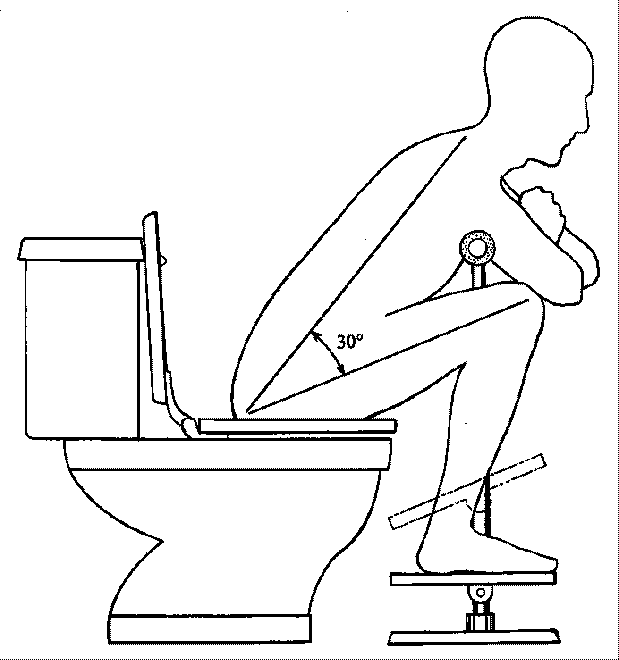
The optimum angle between the torso and femurs is 30 degrees for aligning the anal canal with the rectum. The SquatSupport includes a frontal upper body support that cooperates with a movable footrest to comfortably position and support a user at the optimum squat angle. A calibrated scale ensures fast, accurate adjustments of the footrest according to the user's height.
SquatSupport:
The SquatSupport supports a user very comfortably in an advantaged squat posture on a toilet. Squat posture during defecation is of major importance for the prevention of lower bowel disorders. The reasons are as follows:
Sitting in the conventional position on toilets plays havoc with human health. Medical imaging shows that, when sitting, the rectum is sharply bent to maintain anal continence and is therefore resistant to being emptied [1]. Excessive straining is often required to defecate and, for many, the resistance results in pain, irregularity, increased stool transit time, and constipation [2]. Slower transit time and constipation and are risk factors for colon and rectal cancer in the middle and latter years of life [3]. Excessive straining on toilets may also cause damage to the lower bowel including bowel herniations known as diverticulosis [4] and is implicated in the development of GERD [5]. Feeling bloated, the perceived need for laxatives, and other discomforts are also consequential to inefficient bowel emptying due to the sitting position.
Another problem caused by the conventional sitting posture on toilet seats is internal and external hemorrhoids [6,7]. As a person sits upright on a toilet, upper body weight causes the toilet seat to create a compression ring around the buttocks. Normal blood flow out of the anal and rectal veins is restricted by the compression, thereby increasing blood pressure within the veins. Undue straining, concomitant with the sitting position, further contributes to excessive pressure in the anal and rectal veins. As the pressure builds, the veins swell or balloon out. After repeated episodes, the veins become varicose and result in the formation of internal and/or external hemorrhoids. The abnormal pressure sometimes causes the hemorrhoids to break out of containment (prolapsed hemorrhoids).
The only natural and correct posture for defecation is a squat position. Medical imaging shows that in a squat position, the rectum is straight and vertical [1]. The anal canal is vertically aligned with the rectum so bowel contents pass through easily with minimal effort, thus avoiding the pressure conducive to hemorrhoids and lower bowel damage [1,2,4,6,7]. Evacuation is more complete, efficient, and timely so that stool transit time is reduced and repetitive constipation may be avoided. According to Jacobs and White (Reference 3) repetitive constipation is a risk factor for colorectal cancer.
In Western countries, lower bowel maladies abound in spite of decades of high-fiber diet trends. Many Western gastroenterologists have inadequate knowledge of the importance of squatting. The savvy ones strongly recommend a squat position on a standard toilet, but they have not come up with an adequate supportive device to do so. A step or footstool in front of the toilet, for example, doesn't support the user's legs at a height appropriate for all users and doesn't support a user's upper body. A frontal support is needed to properly hold the upper body of the user in the correct position and to reduce the ring of pressure from the toilet seat. The user's torso and thighs need to be supported, according to the user's height, such that the user is in optimal squat posture.
The solution, having all the features needed to comfortably support advantaged squat posture on a standard toilet, is the SquatSupport.
Medical References:
1. Target R E B. The anal canal and rectum: their varying relationship and its effects on anal continence. Dis. Colon and Rectum 9: 449-452, 1966.
2. Sikirov B A. Primary constipation: an underlying mechanism. Medical Hypotheses, 28: 71-73, 1989.
3 . Jacobs E J, White E. Constipation, laxative use, and colon cancer among middle-aged adults. Epidemiology, 9 (4): 385-91, 1998 Jul.
4. Sikirov B A. Etiology and pathogenesis of diverticulosis coli: a new approach. Medical Hypotheses, 26: 17-20, 1988.
5. Sontag S J. Defining GERD. Yale Journal of Biol Med, Mar-Jun; 72 (2-3): 69-80, 1999
6. Sikirov B A. Management of hemorrhoids: a new approach. Israel Journal of Medical Sciences 23: 284-286, 1987.
7. Sikirov B A. Straining forces at bowel elimination. Israel Journal of Medical Sciences 25: 55-56, 1989.
SquatSupport Health Advantages:
The SquatSupport supports the user in an advantaged squat posture that facilitates defecation and counteracts the development of:
(a) Hemorrhoids. Squat posture during defecation lessens pressure in anal and rectal veins to prevent hemorrhoids. (See References 6 and 7.)
(b) Diverticulosis. Squat posture minimizes straining during defecation to reduce the risk of diverticulosis (bowel herniations) and other damage to the lower digestive track. (See Reference 4.)
(c) Constipation. Squat posture straightens the recto-anal angle so bowel contents pass more easily to help avoid constipation. (See Reference 2.)
(d) Colon and rectal cancer. Squat posture reduces the risk for colorectal cancer by helping to avoid constipation, thus reducing stool transit time. The causal connection between constipation and colorectal cancer is reported in Reference 3.
(e) Anal restriction. Upper body weight on the toilet seat is reduced by the SquatSupport. Thus the ring of restrictive pressure, caused by the toilet seat around the buttocks, is alleviated to allow the anus to open wider.
(f) Strain, pain, and bloating. The ease and efficiency of emptying the bowel using the SquatSupport helps to avoid the discomforts and consequences of irregularity, thus improving health and the quality of life.
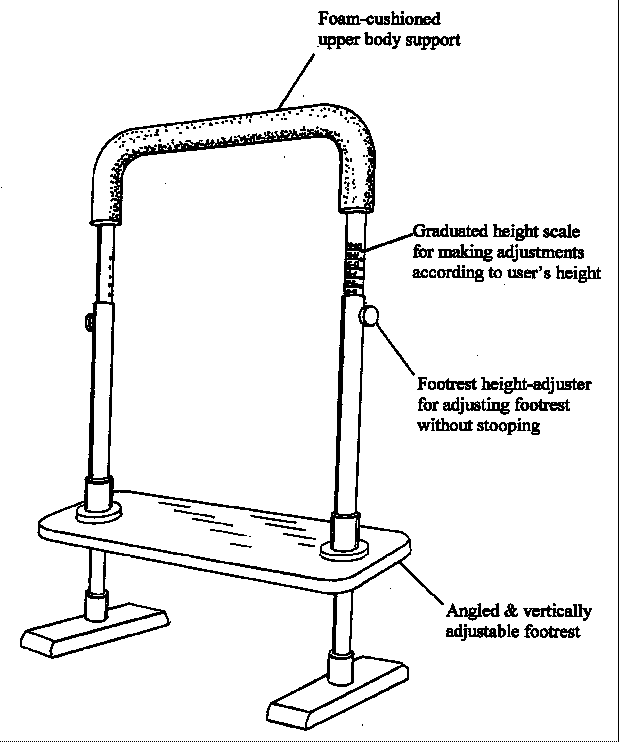
SquatSupport Features:
Inventor: Charles Urso, c/o Enterprising Concepts, P.O. Box
541136, Waltham, MA 02454-1136
Phone: (781) 891-1688
E-mail: [email protected]
 since September 3, 2001
since September 3, 2001
Back to the MarketLaunchers.com home page
Order your own invention web page for only $1 down, and get your invention seen by manufacturers ...